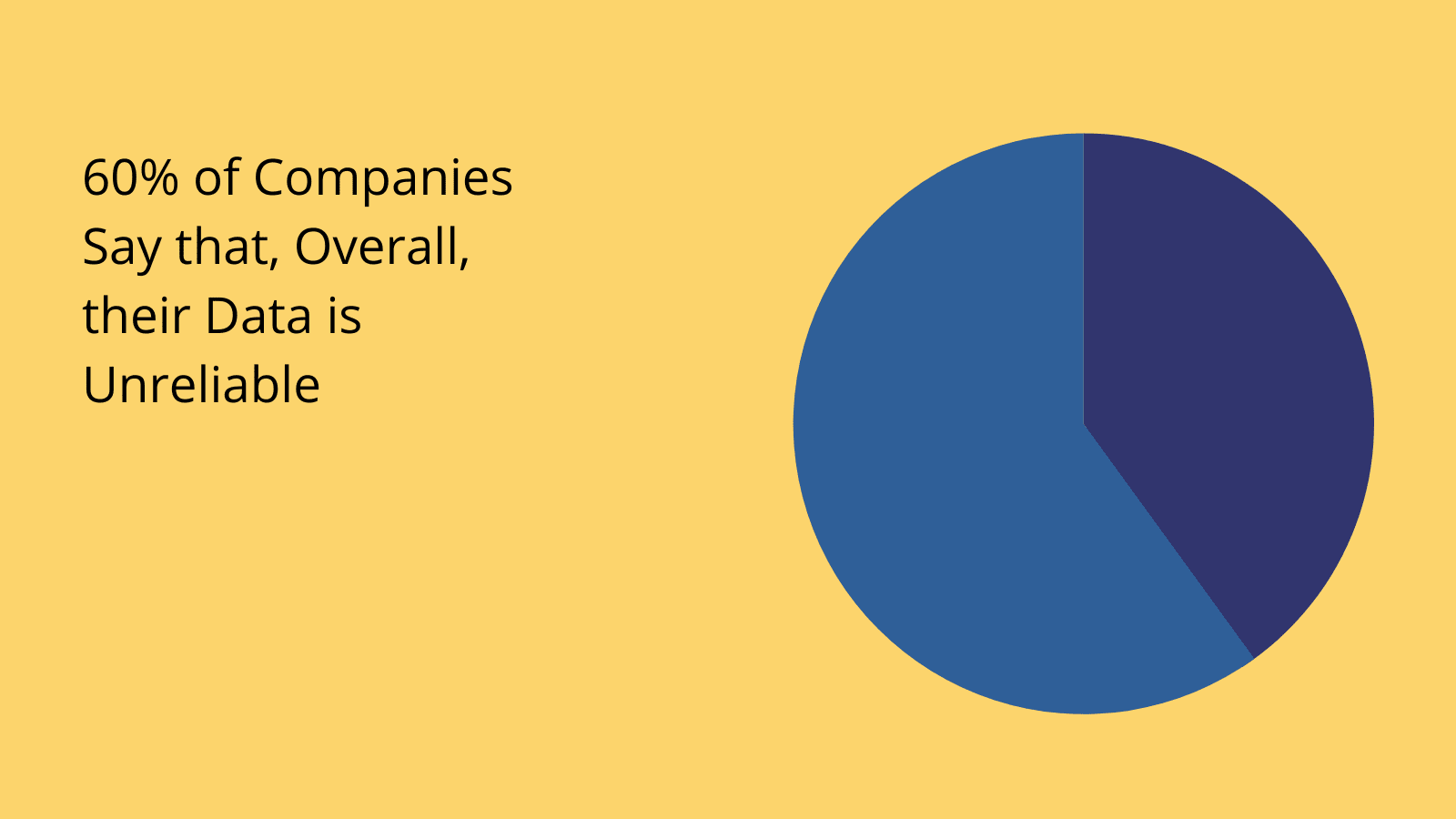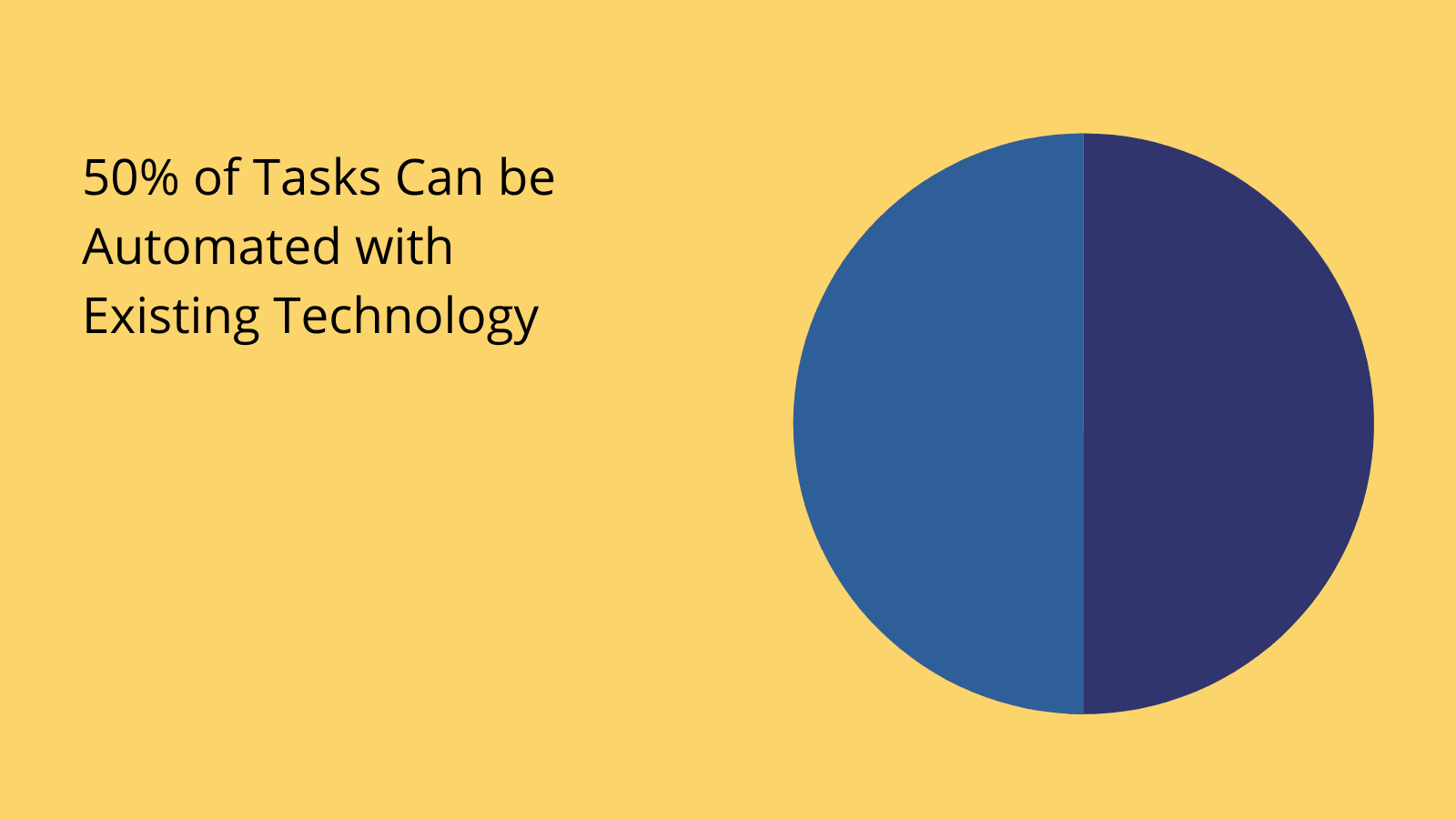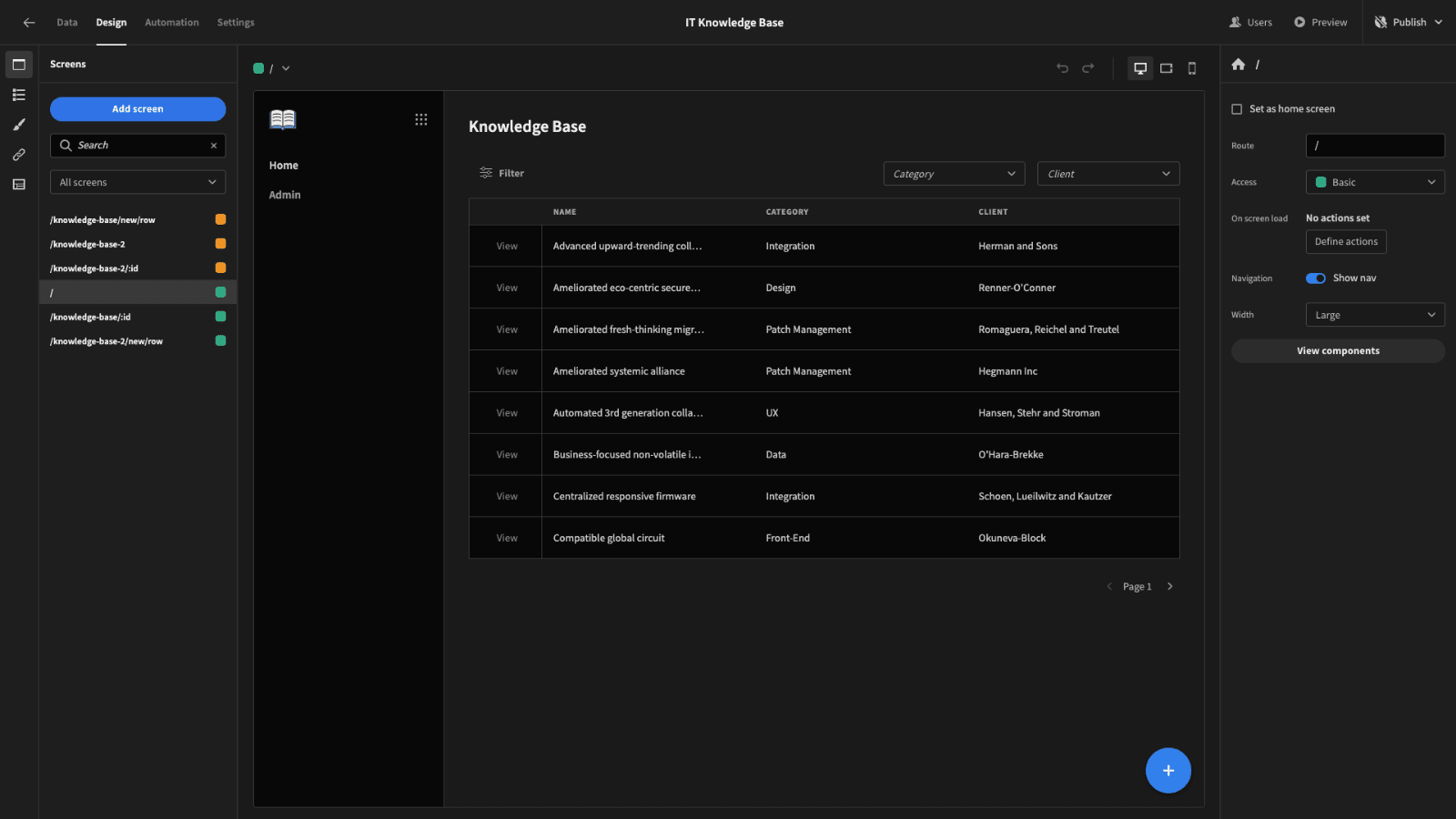What are Information Management Workflows
Information management workflows are some of the most basic tasks that you’ll find in almost every business.
Basically, any cognate task is going to include some element of information management. That is, we’ll almost inevitably need to gather, store, transform, or communicate information - regardless of what this actually represents.
This could be invoice data, customer requirements, minutes from a board meeting, marketing content, or anything else. The point for today isn’t the information itself, but how we handle it internally.
Today, we’re covering everything you need to know.
We’ll dive into the basic building blocks of information management workflows, and the specific tools and techniques you can use to optimize them in your business. Then, we’ll tie it all together by looking at how to create a bespoke information management strategy.
But first, let’s go a bit deeper into the basics.
What is information management?
Information management is the sum of all the processes and tools you use to collect, store, organize, and use data within your business. This could be anything from simple spreadsheets to highly advanced data warehousing.
There are several - potentially conflicting - goals that information management seeks to balance.
These include speed, security, accessibility, compliance, integrity, accuracy, and more - with different internal stakeholders likely to have their own distinct priorities around these.
Information management is all about creating a unified strategy that maximizes the business value we can derive from our data.
At the same time, information management is the basis of a whole range of other process improvement activities.
That is, having effective, documented, and consistent information management workflows in place is a prerequisite for most other kinds of process management.
So that’s information management.
But…
What is an information management workflow?
Workflows are defined sets of actions that are required to complete a particular task. So, an information management workflow is the sequence of actions that are required to perform a specific information management task.
For example, data entry, migration, specific transformations and aggregations, reporting, or lifecycle management tasks.
A workflow also includes the business logic that governs how we progress between constituent actions. In other words, how do we know when one step has been completed successfully and what to do next?
The same applies at an overall level. In other words, how do we know when the workflow as a whole has been successfully completed?
Your wider information management strategy is inevitably going to be made up of a whole range of individual workflows. The number of these will increase the more complex your internal data model is.
For example, you’ll probably have several distinct workflows for collecting, entering, or otherwise gathering different kinds of information. Different data objects and sets will require different steps for each of these actions.
So, if we’re gathering customer data or payment details, we’ll need a high degree of validation.
With internal survey responses, this is less applicable.

(ThriveMyWay )
The information lifecycle
Now we know what information management is in the abstract and how it contributes to organizational performance. To better understand what all of this looks like in practice, we need to understand the information management cycle.
Basically, this is everything that happens to information from when we initially acquire it to its eventual deletion or retirement.
Now, the very specific details here are going to vary across different individual workflows - whether this means working with different data or doing different things with the same data.
The basic, generic stages of the lifecycle look like this:
1. Collection
First, there’s how your business collects information. This can come in a whole array of different forms - from internally created data to existing information gathered from external sources.
Nowadays, almost all data collection is digital - we’re either generating it through event triggers we’ve created, manually entering it in forms or spreadsheets, digitalizing paper documents, or getting data from external sources via APIs or WebSockets.
So in terms of data collection workflows, what are our priorities?
Basically, we want to ensure:
- We’re collecting all of the information we need.
- We’re not collecting any information we don’t need.
- We have measures in place to ensure the validity, accuracy, and integrity of data.
- We don’t create unnecessary admin burdens.
- We employ automation as far as possible.
Take a look at our guide to data entry automation to learn more.

(MIT )
2. Storage
The next stage of the information management lifecycle is storage. In theory, this could be anything from a filing cabinet to a modern data center. The ideal is some kind of formal database, but - unfortunately - for most businesses, we’re dealing with spreadsheets.
Your choice of databases can be informed by a number of factors.
This includes the size, regularity, and complexity of your data assets, as well as any additional performance, accessibility, or security requirements stemming from how you want to use this data.
Besides your choice of DBMS, you’ll also need to think about physical storage and hosting solutions.
Check out our ultimate guide to data sources to learn more.
3. Distribution
Distribution is where things really get interesting. This is where we put information in the hands of users - who can leverage it, either to perform specific actions or to inform decision-making.
In the olden days, this was literal distribution. That is, periodically updating the right people.
Today, distribution is somewhat more sophisticated. On the one hand, we have centralization, data pipelines, and other solutions that are put in place to minimize siloing and ensure visibility across the organization.
On the other, there are dashboards, CRUD apps, and other internal tools that allow on-the-ground to interact with data in the manner they need to in order to carry out their daily responsibilities.
Distribution therefore also stems off into all of the transformation, aggregation, and processing that we do within specific business processes.
You might also like our guide on how to make a web app .
4. Archiving
Archiving is an often overlooked, yet important part of the lifecycle. However, it doesn’t necessarily apply to all data. Basically, this is how we store data that’s no longer actively used.
This is required where there’s a compliance-related reason why we might need to be able to present historical data - for instance, around finances, HR, or legal issues.
As you might imagine, a big part of the challenge here is that the kinds of data we need to archive are more likely to be highly sensitive. So, there are additional security and compliance concerns.
Additionally, data storage costs money. To avoid excessive costs, we don’t want to archive any data that we don’t need to - or for any longer than we need to.
5. Destruction
Finally, we have destruction and deletion - when we dispose of data at the end of its lifecycle. Again, this isn’t something that we’re going to need to do in all information management workflows.
Really, there are two scenarios where it’s required.
The first is for compliance reasons - especially when we’re dealing with information relating to identified or identifiable persons.
Essentially, most businesses are bound by regulations like GDPR, HIPPA PIPEDA, or their regional equivalents - and therefore can’t keep data for longer than they need to.
The other scenario is that we simply don’t need data anymore - and so there isn’t a business case for continuing to pay to store it.
Information management workflow optimization strategies
By now, you should have a very detailed understanding of what information management workflows are and what they can involve. You might even have some specific examples in mind from your own business.
The next item on the agenda is examining how we can optimize them.
The fact is, the way businesses interact with data has fundamentally changed over the past decade - and even more recently than that.
Some of the key information management workflow optimization strategies include:
- Automation - For everything from specific, granular tasks, to more widespread validation, cleansing, and migration processes.
- Cloud transformation - Moving data and associated processes to the cloud.
- Dedicated information management UIs - Focusing on providing intuitive interfaces for common data interactions - even simple forms or dashboards.
- Access control solutions - Governing who can access our information, how, and when.
- Data centralization, pipelines, and warehousing - Helping us to rationalize our organizational data.
- Governance and policy interventions - Changes to the workflow itself, to remove extraneous or unnecessary actions.
Of course, these are only the broad categories of optimization strategies that we can turn to. We also need to consider how we can go implement them.

(McKinsey )
Workflow optimization tools
The key is selecting the right tools for improving information management workflows.
Now, there are a wide variety of solutions that we can turn to, but - broadly speaking - we’re looking at the kinds of tools that allow us to interact more securely, efficiently, and accurately with data.
The most important classes of solutions here include:
- Workflow automation platforms - Tools like Zapier that allow us to create integrated, automated workflows.
- DBMS tools - Database management systems that are appropriate for our storage and distribution needs.
- Infrascturecture monitoring tools - Solutions that enable us to ensure our physical storage is performing the way we need it to.
- Low-code platforms - For building automations, interfaces, and other information management tools.
- Traditional custom solutions - Hard coded tools.
- Data warehousing, automation, and centralization - Tools like PostHog or Snowflake.
- API management - Solutions for managing our API configuration and endpoints.
- Cloud solutions Including serverless or containerized deployments.
We’ll see why Budibase is the perfect solution for building your information management workflow optimization strategy while touching on each of these classes of business process management software.
How to manage information in 6 steps
Now, let’s bring together everything that we’ve learned so far and think about how we can craft the perfect information management strategy for our specific needs.
Here are the repeatable steps that you can follow.
1. Audit information management workflows,
First of all, we want to document our existing information management workflows. To start, this means listing all of the ways that our team regularly interacts with our data assets.
Once we have this in place, we want to drill into each one and document its constituent actions, and the logic underpinning them.
The goal here is, first, to understand how our workflows work - and second, to identify specific improvement opportunities including where we’re encountering inefficiencies or potential for human error.
By the end, we should have an understanding of what areas within our processes are effective and which need to be improved upon.
2. Map new workflows
Next, we can begin to map out the workflows that we want to implement. That is, we’re designing our new information flows.
For now, it’s enough to do this in abstract terms.
In doing so, we’ll need a clear understanding of what we want to achieve. So, we’re often balancing speed and accessibility on the one hand with security, integrity, and validity on the other.
By the end of this stage, we should have a detailed plan of how each workflow is going to work, including its constituent components, the logic governing them, and the colleagues that are responsible for each element.
3. Identify technical needs
At this point, we need to create a technical plan for implementing our new information management workflows.
Depending on the extent of your planned changes, this could range from relatively superficial automations to a wholesale redesign of your internal infrastructure.
The key is to think about your needs in terms of user interactions, storage, integration and connectivity, auditing, infrastructure monitoring, and all other elements of the information management lifecycle that we outlined earlier.
Check out our ultimate guide to internal processes .
4. Automate information flows
Next, we want to think specifically about what elements within our new process we can automate. Except for cases where we need a high degree of human discretion, the goal is to remove manual administrative tasks wherever possible.
For example, something as simple as automated form validation can hugely reduce the labor costs we’ll incur during data entry - both by reducing the need for manual checks and by largely eliminating the potential for human error.
Automations can also make certain data management tasks almost entirely redundant. For example, effective pipelines and simple dashboard tools can more or less eliminate the need for manual analysis and reporting in regular processes.
5. Implementation
It’s time to implement our changes. There are a few important elements to keep abreast of here. One is that migration is always risky. So, if we’re moving data around, we need to have a clear plan in place, including testing and contingencies if anything goes wrong.
We also need to account for training in the run-up to changing over to our new processes.
That is, our team needs to understand exactly what is going to be expected of them going forward - as well as the rationale behind our new processes.
6. Monitoring and continuous improvement
Finally, we need to monitor the effectiveness and success of our new information management workflows. So, if we set out to improve efficiency, we want to establish whether or not we’ve actually reduced operating costs.
The goal here is twofold. First, if we’re failing to meet our targets, we want to know why - and what we need to change.
If we’re succeeding, we want to identify areas where we can implement further optimization and improvements, as well as lessons that we can carry over to other aspects of our information management strategy.

Turn data into action with Budibase
At Budibase, we’re on a mission to help teams turn data into action. Our, open-source, low-code platform is the ideal solution for automating workflows, building internal tools, and launching custom solutions at pace.
Here’s how we’re revolutionizing the way IT teams output apps.
Our open-source, low-code platform
Connect your data, build interfaces, create automation rules, and deploy wherever your like - with minimal custom code. Budibase cuts development times down to a fraction of the hard-coded equivalent.
Check out our features overview to learn more.
External data support
Budibase leads the pack for external data support. We offer native support for MySQL, Postgres, SQL Server, S3, Google Sheets, Airtable, Mongo, Couch, Oracle, Arango, REST API, and more.
We’ve also got our own built-in database and full support for custom data sources.
Optional self-hosting
Take control of how and where you deploy your information management workflow solutions. Budibase offers optional self-hosting, using Kubernetes, Docker, Docker Compose, Digital Ocean, Portainer, Linode, and more.
We also offer our own cloud hosting platform, to get you up and running in seconds. Check out our pricing page to learn more about both options.
Integrations and automations
Budibase makes it a breeze to automate existing business logic. Use our flow-based editor to combine, nest, and configure a wide array of built-in automation triggers and actions.
Our automations also offer extensive connectivity with third-party apps, using Zapier, WebHooks, REST API, and more.
Role-based access control
Seamlessly combine security with efficient workflows using Budibase’s native role-based access control. Assign users to defined roles and grant permissions based on data sources, queries, automation rules, UI screens, or individual components.
We also offer free SSO using OAuth, OpenID, and Microsoft - alongside secure environment variables to store your database credentials.
Custom plug-ins
Budibase won’t be beaten for extensibility. Use our dedicated CLI tools to build your own data sources, components, or automation actions. Or, import community contributions from GitHub in just a few clicks.
Check out our plug-ins documentation to learn more.
50+ free application templates
Businesses in all industries choose Budibase to build web apps, internal tools, and workflow automation solutions. To show off what our platform can do, we’ve created more than fifty free, fully customizable app templates .
Sign up to Budiase for free today to start building web apps the fast, cost-effective way.